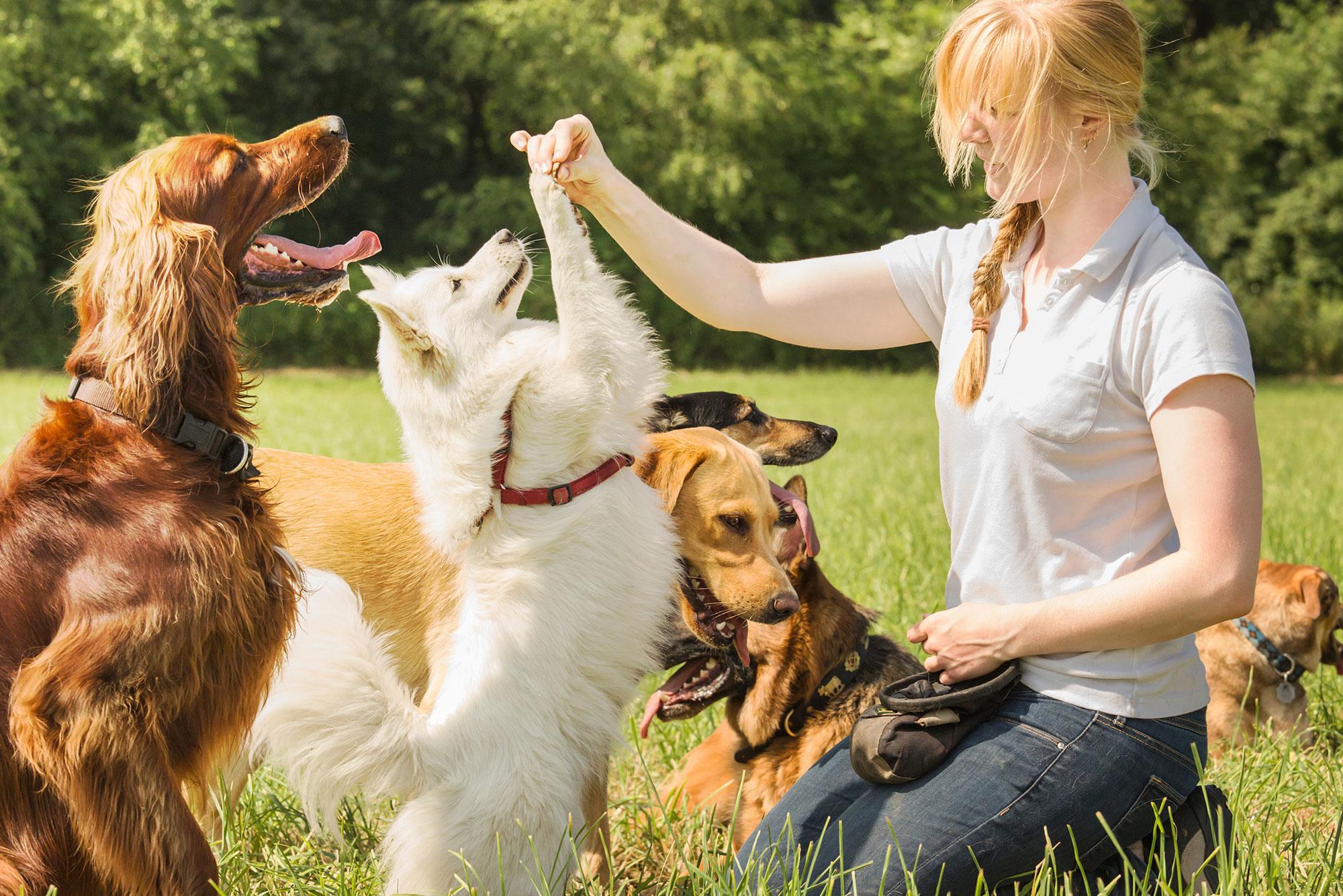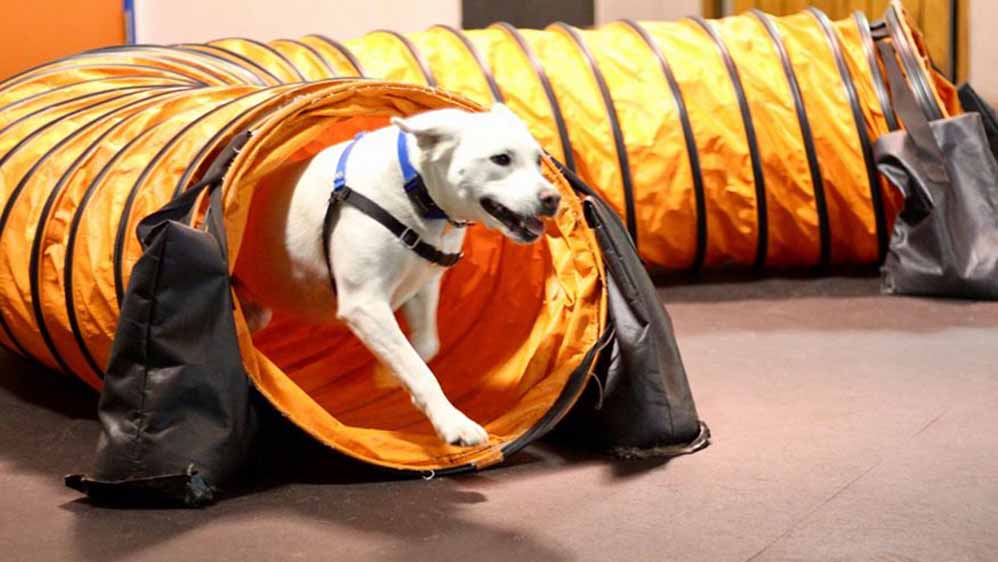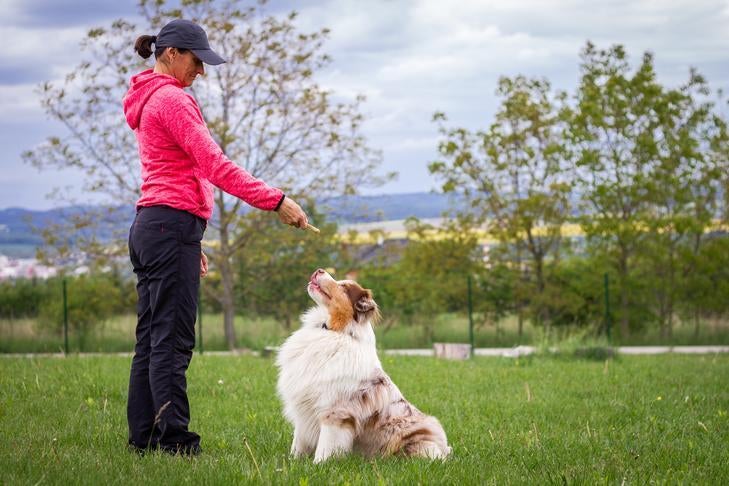The Ultimate Guide to Favorable Reinforcement in Dog Training
The Ultimate Guide to Favorable Reinforcement in Dog Training
Blog Article
Vital Tips for Effective Dog Training: A Guide for Family Pet Owners
Efficient pet dog training is a complex process that calls for a critical technique tailored to both the animal's personality and the proprietor's purposes. Key components such as establishing constant commands, utilizing favorable reinforcement, and promoting very early socializing play critical roles in promoting a well-adjusted canine buddy. Numerous family pet owners come across challenges that can hinder progression, leading to disappointment and uncertainty. Comprehending how to navigate these challenges can dramatically boost the training experience, ultimately changing the connection in between proprietor and pet. What are the essential techniques that can be used to ensure success in this endeavor?
Comprehending Dog Actions
Comprehending pet actions is important for effective training and cultivating an unified partnership between pooches and their proprietors. Pet dogs communicate mostly with body movement, articulations, and activities, making it vital for owners to interpret these signals accurately. Identifying a dog's posture, tail placement, and ear alignment can provide understandings into its emotion. A wagging tail does not always suggest happiness; it can likewise signify enjoyment or stress and anxiety.

Socialization plays a substantial function in pet dog behavior; exposure to various atmospheres, people, and other pets can considerably affect a pet dog's personality. Variables such as breed qualities and individual personality need to direct training methods, as some breeds may have specific behavioral characteristics that require customized techniques. By recognizing these elements, proprietors can develop a supportive setting that motivates positive actions, resulting in successful training results and a much deeper bond with their animals.
Establishing Regular Commands
Effective communication with your pet starts with establishing constant commands. This foundational aspect of training is crucial for cultivating understanding in between you and your family pet. Consistency in the commands you utilize makes certain that your canine can reliably associate particular words or phrases with the preferred behaviors.
When selecting commands, pick clear, unique words that are easy to state and separate from each other. Stay clear of using similar-sounding commands that might puzzle your canine. For instance, making use of "rest" and "remain" is appropriate, yet "rest" and "hit" can cause misconceptions.
In addition, maintain the same tone and volume for each and every command. Dogs are sensitive to vocal signs, so differing your tone can develop complication.
It is just as important to make certain that all member of the family get on the very same page concerning the commands utilized. A united front in command use will certainly prevent mixed signals and strengthen the knowing procedure.
Favorable Reinforcement Techniques
The power of positive reinforcement in pet training exists in its capability to motivate preferred actions through benefits and praise. This method is grounded in the concept that habits complied with by favorable results are most likely to be duplicated. By including positive support right into your training routine, you can efficiently form your dog's actions in a useful manner.
To implement positive support, it's vital to identify what encourages your dog, whether it be treats, toys, or spoken appreciation. When your dog executes a preferred activity, such as remaining on command, quickly compensate them with a reward or affection. This organization in between the command and the positive outcome enhances their understanding.
It's essential to timing the benefits correctly; delivering the support within seconds of the desired actions aids your canine make the connection (dog training). Furthermore, uniformity is vital-- make certain that all family participants utilize the same commands and incentive systems to avoid confusion

Progressively, you can lower the regularity of treats as your pet learns the actions, transitioning to praise or recurring benefits. This approach not only fosters a strong bond in between you and your pet dog however likewise promotes a positive knowing setting, making training an enjoyable experience for both.
Socialization and Communication
Continually subjecting your dog to a variety of settings, individuals, and various other animals is critical for their social advancement. Socialization ought to begin early, ideally throughout the critical window of 3 to 14 weeks, when young puppies are most receptive to new experiences. Nonetheless, older canines can additionally benefit from Visit This Link continuous socializing efforts.
Present your pet dog to different settings, such as parks, pet-friendly stores, and city locations. This direct exposure aids them adjust to numerous stimulations, minimizing stress and anxiety and fear reactions. Encourage favorable communications with various other pets and individuals, making sure that these encounters are controlled and secure to foster confidence.
Utilize organized playdates with well-mannered canines, as this can enhance your pet dog's social abilities and show them appropriate behavior. Obedience courses and training sessions additionally supply exceptional chances for socialization, enabling your dog to engage with others in a monitored environment.
Screen your canine's body movement during interactions, as this will assist you assess their convenience level. Progressively boost exposure to more tough scenarios while making sure that each experience is favorable. A well-socialized pet is most likely to exhibit balanced behavior, making them a joy to have in any setup.
Resolving Common Training Difficulties
Every pet owner will certainly experience training obstacles at some time, despite their pet dog's age or socialization degree. Determining usual problems such as stubbornness, diversions, and terror can help in creating effective methods for enhancement.

Progressively present diversions as the pet dog becomes much more skillful in commands. Short, constant training sessions are also reliable in preserving focus.
Terror can hinder a dog's understanding process. Steady desensitization to the resource of concern, paired with positive support, can aid alleviate anxiousness. Patience is essential; never ever require a dog into a circumstance that creates distress, as this might exacerbate the concern.
Inevitably, understanding and dealing with these typical challenges with an organized strategy will promote a more productive training experience, reinforcing the bond between dog and proprietor while advertising reliable understanding.
Conclusion
In summary, successful dog training relies upon a comprehensive understanding of canine behavior, the facility of constant commands, and the application of positive reinforcement methods. Socializing plays a crucial duty in creating well-adjusted family pets, while resolving usual training obstacles needs perseverance and versatility. By applying these crucial strategies, family pet owners can foster a strong bond with their pet dogs and promote desirable habits, ultimately causing a harmonious partnership in between people and their canine friends.
Comprehending canine behavior is vital for reliable training and promoting a harmonious connection in between dogs and their owners.Socializing plays read what he said a substantial function in dog behavior; exposure to different environments, people, and various other animals can substantially affect a pet's personality.The power of positive support in pet training exists in its ability to motivate wanted behaviors via benefits and praise. By including positive reinforcement right into your training routine, you can effectively shape your pet's actions in a positive manner.
In summary, successful pet dog training depends on a thorough understanding of canine actions, the establishment of regular commands, and the application of positive support strategies.
Report this page